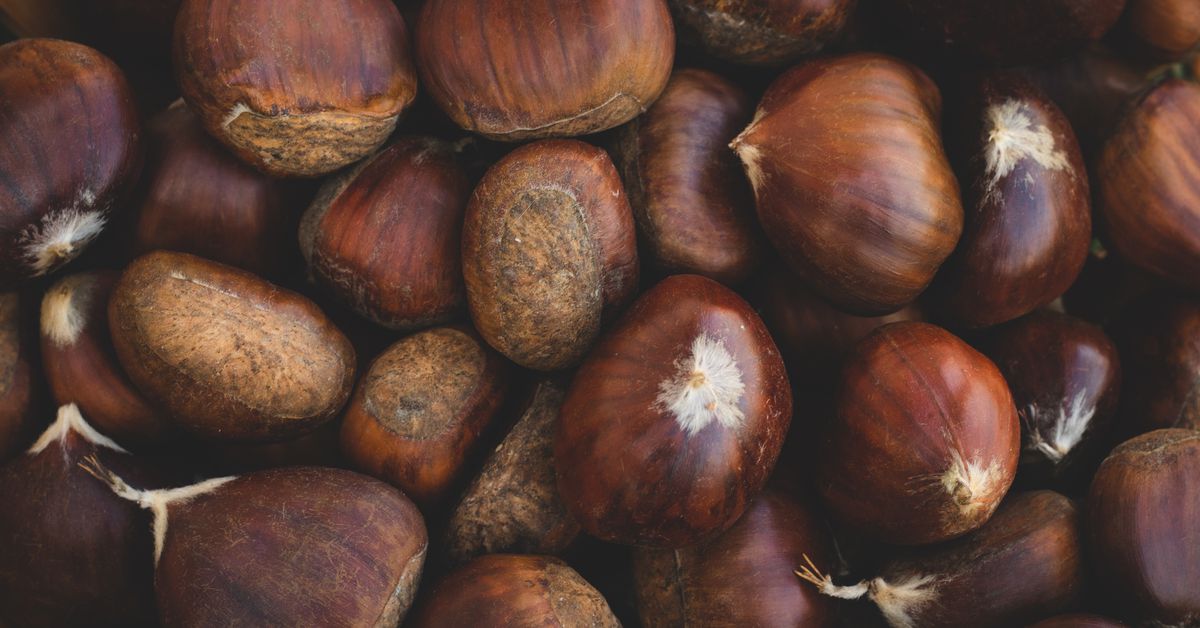On September 22, 1870, Henry Ward Beecher — a clergyman and social reformer as well as the brother of Uncle Tom’s Cabin author Harriet Beecher Stowe — took to the Pittsfield Sun newspaper to write of the pleasures of “a-chestnutting” during his Massachusetts boyhood: “There was frolic enough, and climbing enough, and shaking enough, and rattling nuts enough, and a sly kiss or two, but never enough.” Chestnut trees were a staple of life in colonial America, and many who lived there, Beecher included, could not imagine life without them: “Long live the chestnut tree; and the chestnut woods on the mountain side!” he wrote.
Sadly, this would not be the case. In the early 1900s, a deadly fungus was first detected on American chestnut trees in the Bronx Zoo. It had arrived on imported Japanese chestnut trees, and it spread like wildfire. The fungus would kill infected American chestnuts in just a handful of years: Less than a century after Beecher published his article, between four and five billion American chestnut trees had disappeared. Today, most Americans have never tried its nuts; U.S. consumption stands at less than an ounce of chestnuts per person per year, on average.
But this tree once known as “the redwood of the East” is not completely extinct. Visit a farmers market during this time of year, and you still might find yourself gazing down at a basket of shiny, nickel-sized red-brown chestnuts. Ninety-five percent of the few chestnuts Americans eat are imported from Japan, China, or Europe, but these farmers market chestnuts are described as American chestnuts, like ghosts of autumns past. But if the American chestnut is extinct, where did these nuts come from — and what exactly can you do with them?
In October, Gastropod co-hosts Cynthia Graber and Nicola Twilley traveled down to the rolling foothills of the Blue Ridge Mountains to Bryant Farm, where they found themselves standing beneath the spreading limbs and jagged-edged leaves of young chestnut trees — American chestnuts, but not exactly as Beecher might have known them. These trees are hybrids of American and Chinese chestnuts, bred to be resistant to the blight that wiped out their native ancestors. This hybridization is just one strategy taken by a growing movement to bring back this iconic American tree. It’s a challenge that involves Dolly Parton, strip-mined mountain tops, and wheat genes, for a story of love, loss, and reconnection that Gastropod tells in their latest episode.
Kim and David Bryant, the husband-and-wife team that owns and operates Bryant Farm, are growing Dunstan chestnuts, developed in the 1950s when Ohio resident James Carpenter discovered a single living American chestnut in a grove of completely dead trees. Plant breeder Robert T. Dunstan crossed this miraculous tree with Chinese chestnuts known for their nut production. The result is a tree with multiple practical benefits for nut growers: Not only should they survive infection by chestnut blight, but thanks to the genes of their Chinese ancestors, these trees are shorter, topping out at only 40 to 50 feet.
Dunstan chestnuts have been growing in orchards around the U.S. since the 1960s, and are likely the source of the nuts that East Coasters most often see advertised as “American chestnuts.” In the future, they may not be the only source; scientists are currently seeking approval from the USDA to deregulate a genetically modified American chestnut, which would allow it to be planted in forests around the country.
But, even if today’s chestnut farmers are not tending exact replicas of the country’s chestnuts of old, they play an important role in the tree’s revival, both in American forests and in American culture.
“Part of our goal is to get people excited about it, from chefs to bakers to brewers,” says Lauren Evoy Davis, Kim’s sister and the social media and PR manager for Virginia Chestnuts, the collective of local chestnut growers founded by the Bryants. In Henry Ward Beecher’s day, Americans were nutty for chestnuts: Collecting them was an annual event, and they were incorporated into everything from breads to stews to desserts. If growers can get Americans excited about chestnuts once more, they may also be able to get Americans excited about efforts to revive the tree in our forests.
It’s an effort that the team at Gastropod can certainly get behind. On their farm in Virginia, Davis and the Bryants treated Graber and Twilley to a chestnut feast: not just roasted whole chestnuts, but also chestnut risotto, chestnut bread, and chestnut ice cream, each of which showcased the sweet, nutty, creamy American chestnut in its own unique way. The next time you spot chestnuts at a market near you, try them out: It might not be able to transport you back to 1870, it may just help make chestnuts part of our country’s future.

